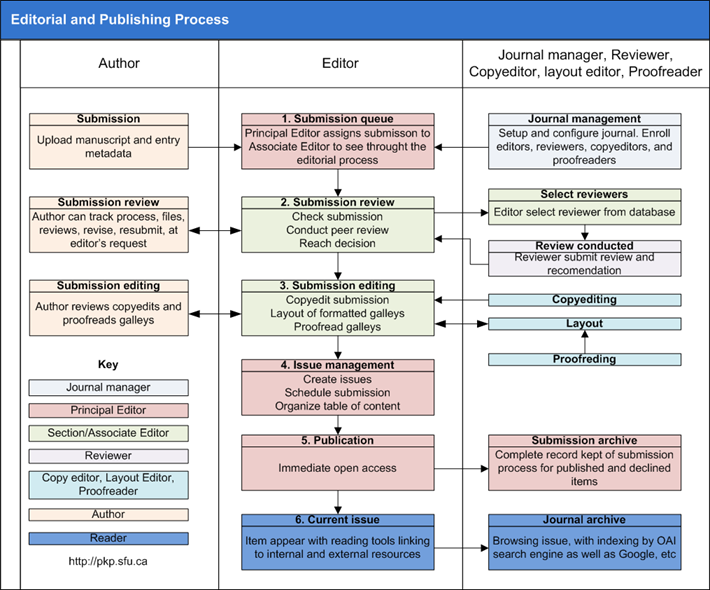Peer Review Process
Papers submitted to TEPIAN are subject to rigorous peer review so as to ensure that the research published is 'good science'.
The manuscript will undergo screening for plagiarism via Turnitin software. Submissions with a similarity exceeding 25% will be subject to further evaluation. If the similarity is found to be due to improper citation, self-plagiarism in the methodology, or other minor issues, authors may be requested to revise and resubmit their manuscript. However, if the similarity involves significant plagiarism, especially in the results or discussion sections, the manuscript will be rejected outright. (More detail - Plagiarism Policy)
Manuscripts are sent out for review electronically, and all correspondence takes place via e-mail. Although the peer review process is accelerated by the use of electronic communication, traditional, high-quality peer-review standards are applied to all manuscripts submitted to the journal.
If the manuscript aligns with the journal's scope, the Section Editor will assign at least two reviewers for evaluation. TEPIAN has a 'single-blind' review process: Authors are not told who reviewed their paper. The peer referees’ identity remains unknown to the authors throughout the review process. If the initial reviewers provide conflicting assessments, additional reviewers will be appointed. To ensure anonymity and uphold academic integrity, all manuscripts undergo a single-blind peer review process. The final decision on the manuscript will be made by the Section Editor and the Editor-in-Chief, based on the reviewers' feedback. The peer review process is managed through the Open Journal System. The Editor ensure that the reviewed manuscript is treated confidentially prior to being published, as explained in publication ethics
Peer reviewers are asked to give their opinion on a number of issues pertinent to the scientific and formal aspects of a paper, and to judge the papers on grounds of originality and urgency. All relevant information will be forwarded to the author(s).
Peer reviewers will have six possible options, for each article:
-
Decline Submission: After thorough peer review, the manuscript is deemed unsuitable for publication in TEPIAN, and resubmission of the same work is not permitted.
-
Resubmit for Review: The current version of the manuscript requires substantial revisions but demonstrates significant potential. Authors are encouraged to extensively revise their work and resubmit it as a new submission. The revised manuscript will undergo a fresh round of peer review to assess its suitability for publication.
-
Revisions Required: The manuscript necessitates modifications before a final publication decision can be made. Authors are requested to revise their manuscript in accordance with feedback from reviewers and editors and to submit the revised version within a specified timeframe. A detailed, point-by-point response to the comments must accompany the revised manuscript. The revised submission may undergo additional peer review, and multiple rounds of revision may be required. If the revisions do not satisfactorily address the concerns raised, the manuscript may still be declined for publication in TEPIAN.
-
Accept Submission: The paper is accepted for publication, subject to conditions that need to be addressed in producing a final version of the manuscript. These may include sub-editing changes and the minor amendment to ensure the paper fully matches our criteria. After final checking in the editorial office, acceptance is confirmed and the paper is forwarded to the publishers for publication.
-
Resubmit Elsewhere: The manuscript, while potentially valuable, is not aligned with the scope or focus of TEPIAN. Authors are advised to consider submitting their work to a more appropriate journal where it may be a better fit.
-
See Comments: In cases where reviewers or editors cannot definitively categorize the manuscript under existing decision options, they will provide specific comments detailing their concerns or suggestions. Authors should carefully review these comments to understand the issues raised and determine the best course of action for their manuscript.
In addition, papers may be rejected directly by the Chief Editor if judged to be out of scope or if scientifically or formally sub-standard.
When asking for revisions, reviewers have two possible goals: to ask authors to tighten their arguments based on existing data or to identify areas where more data are needed. Even formal revision may be required if the language or style is sub-standard. To facilitate rapid publication, authors are given a maximum of 1 months for revision. After 1 months, revised manuscripts will be considered new submissions. [go to Publication Ethics]
Galley proof
Upon acceptance of a manuscript for publication in TEPIAN, the corresponding author will receive page proofs via email for final review. It is imperative that authors meticulously check these proofs for any typographical errors or inaccuracies in content, as they bear the ultimate responsibility for the correctness of their work. Corrections should be confined to typesetting errors; substantial alterations to the text, equations, or grammar may incur additional charges and are generally discouraged at this stage. To prevent delays in the publication schedule, authors are required to return the corrected proofs within three days of receipt. Failure to do so may result in the postponement of the article's publication to a subsequent issue. The editorial team endeavors to ensure accuracy but does not assume responsibility for errors in the published content; thus, diligent proofing by the author is essential.
Editorial and publishing process
Tepian follow the editorial and publishing process set by PKP, as presented in the following figure.

